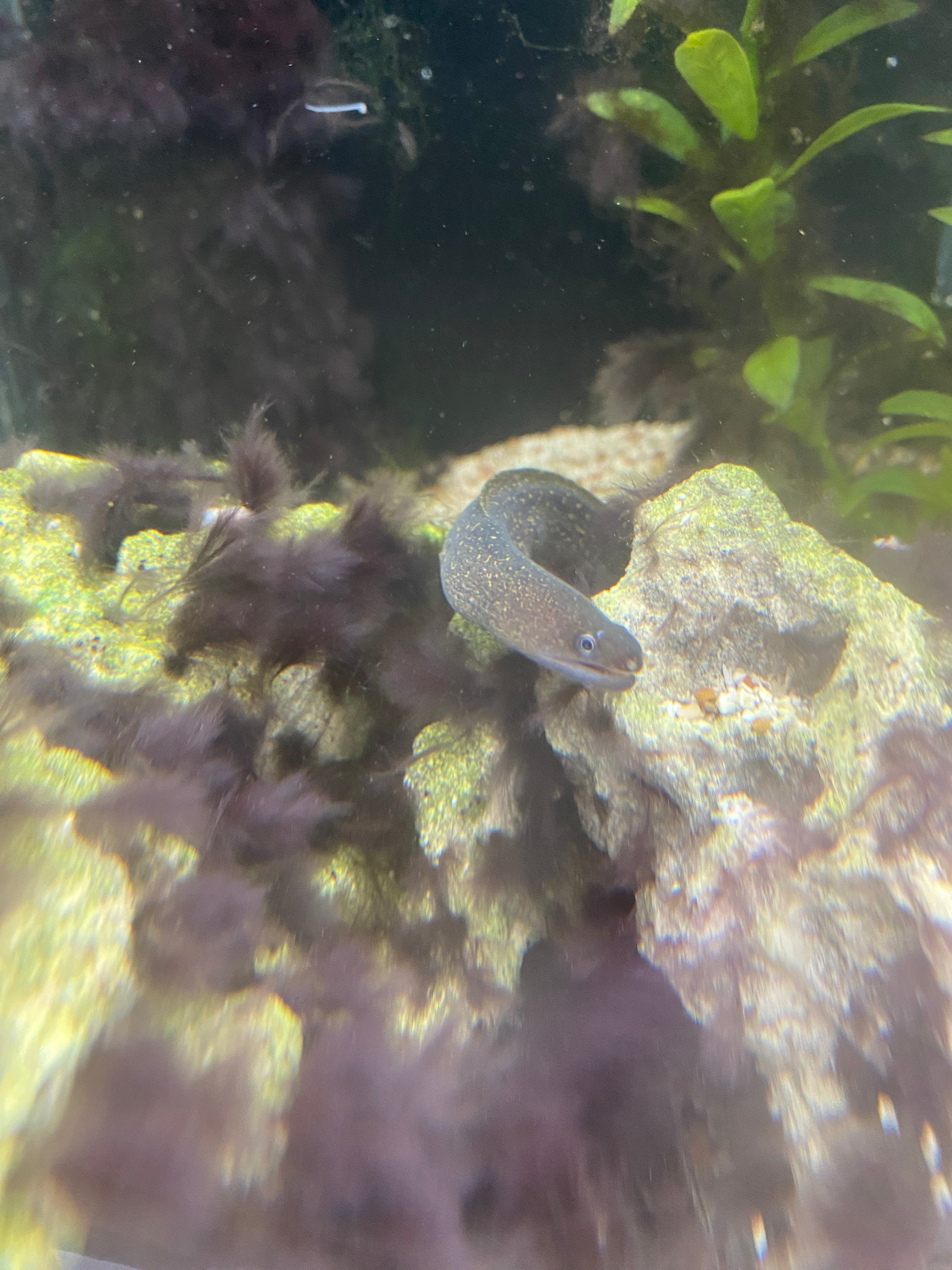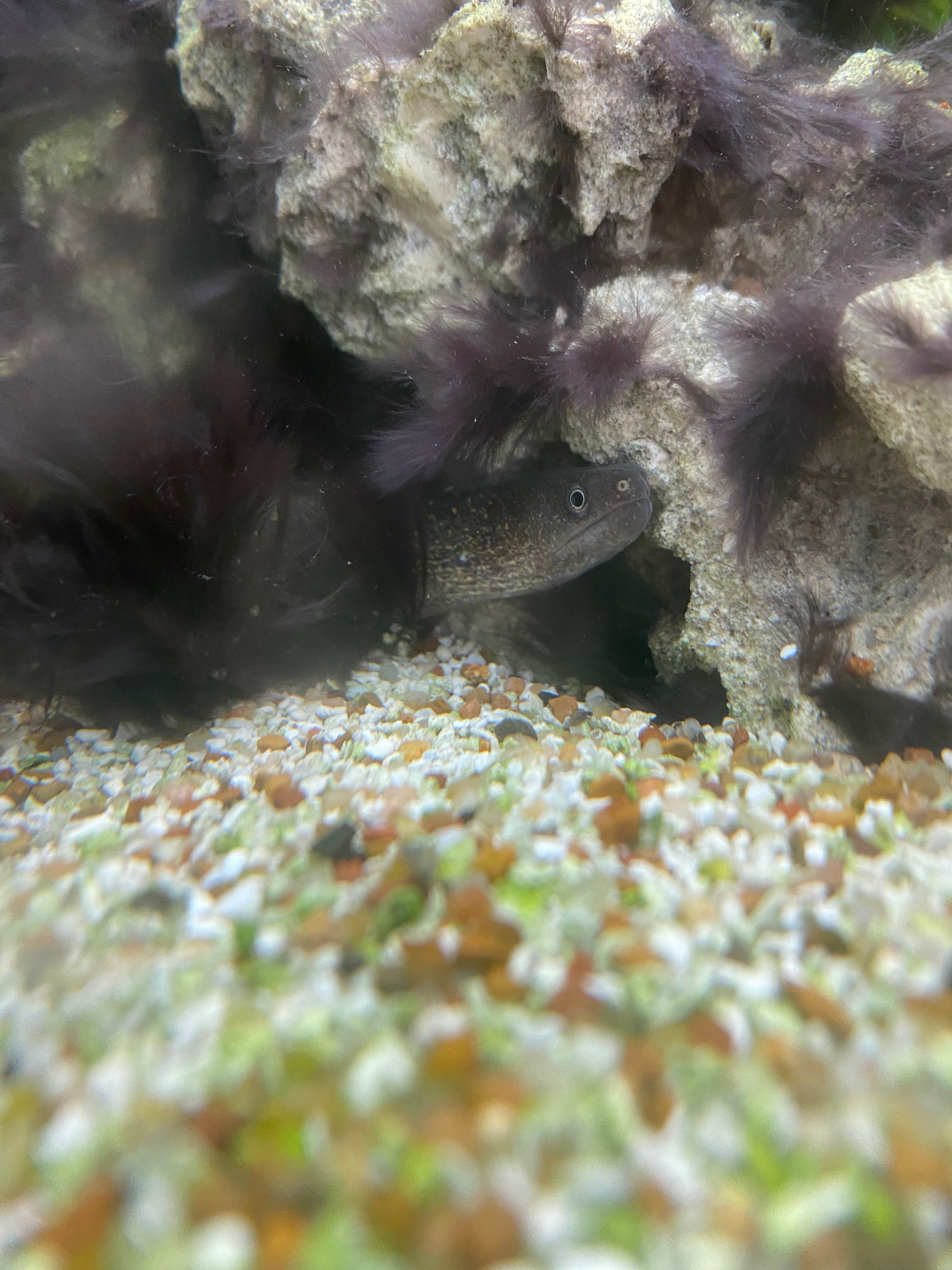Photo Disclaimer
Description
No live arrival guaranteed for shipped specimens of this species
Gymnothorax tile (also known as the Indian mud moray) is a small species of moray eel from Southeast Asia. With a brown body covered in a dusting of golden spots, these eels appear to shimmer as they move. They are often known as the "Freshwater" moray eel; this is a misnomer as these are still a brackish water fish and should be kept with some salt in the water. That being said, they are also quite sensitive to having too much salt in the water - a specific gravity of 0.002-0.004 is ideal. We keep ours around 0.002 and they have thrived for us. Among the smallest species of moray eel available, these fish only reach about 2 feet maximum, although 16-18 inches is average. Like most morays, they will likely only take live foods such as feeder fish or ghost shrimp initially, but can be weaned onto dead foods such as frozen krill with relative ease. From our experience working with these interesting and beautiful eels, they are quite hardy and adaptable, making them perfect for a first-time eel keeper. All in all, these rare beauties are an amazing 1 on 1 pet fish and a real find for those who want something totally different from the usual aquarium fare.
These are juveniles about 1 foot in length. We have trained them to tong feed and they are taking frozen krill, silversides, etc readily.


